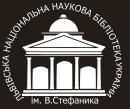DOI: https://doi.org/10.37222/2524-0331-2020-10(28)-18
Mazur Olexandr
Archival phonograms on the musical radio as a type of service auditory documents
Abstract:
In modern high-technology conditions entire process of creating, circulation and distribution of the auditory information, accumulated in phonograms, inherits integration properties that stipulate internal unity of the structure and dynamics of the phonodocumental communication. The research, performed within the framework of Document studies, Archive studies and Musical Art, dedicated to the development of the sound recording classification problem in communication area from the position of archival phonograms selection on the musical radio as a special type of service auditory documents with specific features — types of sound carriers, specifics of the fixed sound content and specifics of the service functions. The publication develops the applying of the informational approach archival radio phonodocuments that currently stay on the periphery of the research interest even comparing to other types of the tecehnotronic documents — pictorial, audiovisual, electronic information sources, different types of the technical documentation.Phonodocumental communication has features of the complicated open area. According to the author’s idea disconnected elements from the radio sector, that were organically collected together and integrated to the balanced phonodocumental communication system. The essence and the purpose of such types of the phonoduments are clarified, also the main regularities of the formation and principles of the classification were formulated. Moreover, based on the fact that radioarchives and some other cultural institutions perform functional of the music information complex repository, this article tells about music sources preservation technologies not only in the radio copmanies archives but in libraries, museums, etc. The expansion of the research field at the expense of the advanced systematization of advantages and disadvantages of the archival radiophonogram consumer format revision was begun. The research approach that was the basis for publication helps to overcome some differences including modern science and educational literature.
Keywords: Archive, Audiodocuments, Music, Radio, Service,Phonogram.
References:
1. Bryuster, B. & Brouton, F. (2007). Istoriya didzheev [DJ’s story], [per. s angl. M. Leonovicha], Ekaterinburg, Ultra. Kultura, 671, [1] s. (in Rus.).
2. Gorokhov, S. N. & Lobanov, E. M. (2014). Sovremennye tekhnologii khraneniya elektronnykh dokumentov [Modern technologies for storing electronic documents], Vestnik arkhivista, no. 1, s. 193—200. (in Rus.).
3. Sineokij, O. V. (2017). Fonodokument v mirovom kommunikaczionnom prostranstve: evolyucziya, sovremennoe sostoyanie, napravleniya transformaczij: cpeczvypusk po materialam dis. … d-ra nauk po socz. komunikatsiiakh [Sound document in the global communication space: evolution, current state, directions of transformations: special issue based on materials of the dis. … Doctor of Social Sciences communications], Zaporizhzhya, Status, 173 s. (in Rus.).
4. Fleishman, G. (2015). The Magazine: The Complete Archives, Publisher, Aperiodical LLC, 372 p. (in Eng.).
5. Krandeva, A. (2013). Events BNR System for Digital Event Archive of the Bulgarian National Radio, Yearbook of Bulgarian Information Consortium: Proceedings from 1st International Conference “Biblio-World: Technologies, Resources, Practices”, Sofia, Technical University, p. 62—67. (in Eng.).
6. Stewart, P. (2006). Essential radio skills: how to present a radio show (Methuen drama), London, A&C Black Publishers, 472 p. (in Eng.).
